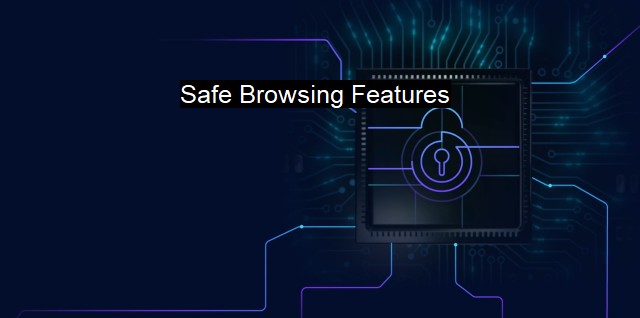What are Safe Browsing Features?
Protecting Your Digital World: The Essential Role of Safe Browsing Features in Cybersecurity
Safe browsing features mainly refer to a set of tools and controls embedded in internet products and services that help protect users from malicious actors and harmful content as they navigate the internet. These features, indispensable in the realm of cybersecurity and antivirus protection, preserve the user experience, protecting their data from the multitude of web-based threats that inhabit the cyberspace while ensuring they enjoy a hitch-free connection.With the advancement of technology, the internet has become a critical part of our daily lives. It offers many benefits such as online shopping, efficient communication, banking services, and access to a limitless pool of information. alongside these benefits are significant threats poised by malicious actors who relentlessly design and deploy harmful content across the internet space to defraud, scam, or harm users. This malignant reality points to the pertinence of safe browsing features extant in numerous internet products and services.
Safe browsing features offer protection on several fronts. They indeed aim to create a safe cyber environment by warning users of potentially harmful websites or block their access to such, ensuring the safe download of files, preserving vital personal and financial data from scamming/phishing attacks, blocking damaging ads and pop-ups, as well as offering protection against various forms of malware such as viruses, Trojans, and ransomware.
These features not only alert users of potential online threats but, by employing comprehensive and updated databases of recognized harmful websites and files, block or dissuade the user from proceeding to such sites or downloading such files. In the light of the data and identity theft incident that has skyrocketed in recent times, this feature can help individuals and businesses avoid catastrophic financial losses and, more importantly, safeguard crucial data from falling into the wrong hands.
Another critical functionality is the ability to block nuisance and sometimes harmful ads and pop-ups. Not only can these elements be disruptive to the user experience, but they can also serve as conduits for harmful scripts. By blocking these, safe browsing does a lot to enhance user experience and provides an added line of defense against web-based threats.
Further, safe browsing features work in tandem with strong cybersecurity systems and antivirus software to counteract the damaging impact of malware on a user’s device. Malware encompasses a range of harmful software like viruses, Trojans, worms, and ransomware, explicitly designed to damage or obtain unauthorized access to a computer system. With a reliable safe browsing feature, known malware-ridden websites are blocked automatically while detailed reports about the threat level they pose can be provided to properly educate the user.
It is worth noting that the effectiveness of safe browsing features largely hinges on the commitment of both the developers and users’ commitment to continually update these systems to adapt to the evolving cache of strategies malicious actors employ.
Now more than ever, in an era defined largely by the advent of the Internet of Things (IoT), and increased dependency on online platforms for numerous human activities – commerce, academics, healthcare, socialisation, and more, robust cybersecurity and antivirus enforcement mechanisms like the safe browsing feature are needed. They are instrumental in neutralising web-based threats, improving the overall internet experience by allowing users to navigate the internet confidently, assuring them that they are protected from the myriad threats in the interconnected cyberspace.

Safe Browsing Features FAQs
What are safe browsing features and how do they protect me from cyber threats?
Safe browsing features are built into web browsers and antivirus software to protect you from online threats such as malware, phishing scams, and malicious websites. Safe browsing features can detect and block malicious links and websites before they reach your computer, helping to keep you safe online.What are some common safe browsing features that I should look for in my antivirus software?
Common safe browsing features include real-time scanning, URL filtering, and browser extensions that flag potentially dangerous websites or search results. Look for antivirus software that includes these features and make sure they are updated regularly to provide the most up-to-date protection.Are safe browsing features effective against all types of cyber threats?
While safe browsing features can provide strong protection against many types of cyber threats, no security solution is 100% foolproof. Even with the latest antivirus software and safe browsing tools, it is important to stay vigilant and practice safe online habits such as not clicking on suspicious links or downloading files from unknown sources.What can I do to further enhance my online safety in addition to using safe browsing features?
In addition to using safe browsing features, you can further enhance your online safety by using strong passwords, keeping your software updated, and avoiding public Wi-Fi networks. It is also important to be cautious when sharing personal information online and to use two-factor authentication whenever possible to add an extra layer of security to your accounts.| | A | | | B | | | C | | | D | | | E | | | F | | | G | | | H | | | I | | | J | | | K | | | L | | | M | |
| | N | | | O | | | P | | | Q | | | R | | | S | | | T | | | U | | | V | | | W | | | X | | | Y | | | Z | |
| | 1 | | | 2 | | | 3 | | | 4 | | | 7 | | | 8 | | |||||||